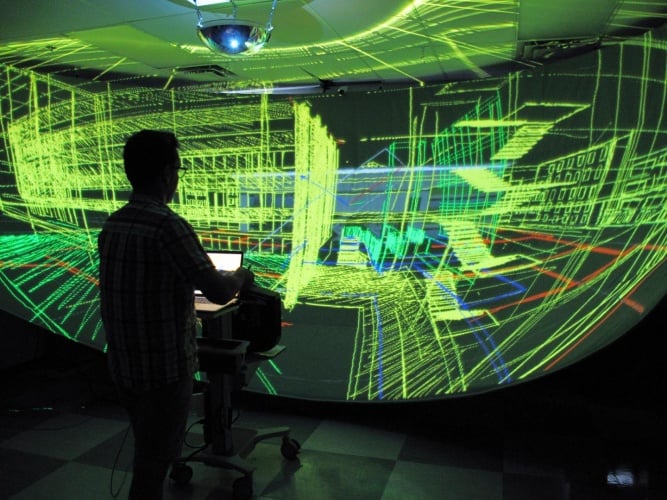New cursor technology enables 3D interaction
Researchers from the University of Montreal have developed a method for computer cursors to operate and interact in 3D environments, opening up design opportunities in several fields.

The technology, unveiled at the SIGGRAPH 2015 Conference in Los Angeles, allows users to control the cursor via a tablet, sweeping it through objects to select them, and using gestures such as pinching and swiping to manipulate the objects.
“Our new technology challenges the notion of what a cursor is and does,” said lead researcher Professor Tomás Dorta, from the University of Montreal’s School of Design.
“The cursor becomes a drawing and controlling plane. The techniques we’re unveiling today involve using a tablet to control the cursor, but as it does not necessarily rely on external tracking of the user’s movements, eventually other devices could be used, such as smart phones or watches.”
The team has been testing the new technology alongside their own Hyve-3D design system, which uses an optical illusion created by a high-resolution projector, a specially designed spherically concave fabric screen, and a dome mirror projecting the images onto the screen.
Register now to continue reading
Thanks for visiting The Engineer. You’ve now reached your monthly limit of news stories. Register for free to unlock unlimited access to all of our news coverage, as well as premium content including opinion, in-depth features and special reports.
Benefits of registering
-
In-depth insights and coverage of key emerging trends
-
Unrestricted access to special reports throughout the year
-
Daily technology news delivered straight to your inbox











Water Sector Talent Exodus Could Cripple The Sector
Maybe if things are essential for the running of a country and we want to pay a fair price we should be running these utilities on a not for profit...